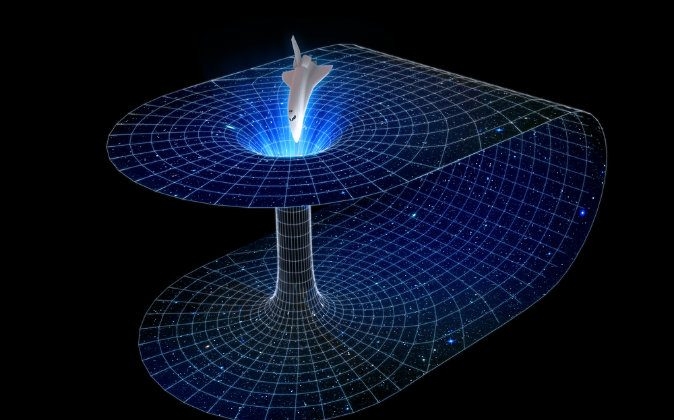Google’s quantum computer provides evidence supporting the existence of wormholes.
Maybe wormholes will no more be confined to the domain of science fiction.
Albert Einstein, widely recognized as one of the most influential physicists in history, made significant contributions to the field through his groundbreaking theories of relativity. These theories elucidate the behavior of matter in motion at incredibly high speeds and revolutionize our understanding of gravity by conceptualizing it as the curvature of space and time. Additionally, Einstein extensively wrote about the peculiarities of quantum mechanics, although he fundamentally disagreed with its principles, he still explored its implications.

Despite Einstein’s esteemed reputation as a genius, additional validation is always welcomed, particularly when it pertains to one of his most extraordinary predictions: wormholes, which are essentially tunnels through space.
To further investigate this concept, a collaboration of researchers from esteemed institutions such as Caltech, Google, Fermilab, MIT, and Harvard employed a device known as the Sycamore quantum processor. This quantum computer, developed by Google, enabled the generation and manipulation of a wormhole-like phenomenon. The intricate interconnections between two of Einstein’s concepts form the basis of this remarkable achievement.
Wormholes and quantum entanglement
In 1935, Einstein collaborated with his student Nathan Rosen to explore ways of transforming his theory of gravity, known as the theory of general relativity, into a comprehensive theory. One challenge they encountered was the occurrence of infinities at the center of black holes. These infinities emerged when the entire mass of a dead star collapsed into a point of zero size, referred to as singularities.
Rosen and Einstein experimented with alternative solutions, including employing innovative mathematical techniques to replace two singularities with a connecting tube. These tubes came to be known as Einstein-Rosen bridges or, more commonly, wormholes. In theory, it would be feasible for an object to enter one end of a wormhole and emerge from the other, despite the significant separation between the two ends. This would entail the object traversing through additional dimensions. This line of research is referred to as ER theory.
Wormholes have captured the imagination of science fiction writers due to their potential for faster-than-light travel. Spacecraft could cover vast distances in no time at all. However, there are numerous practical challenges associated with creating stable wormholes, with a particularly significant obstacle being the requirement for substantial amounts of negative energy to stabilize them.
During the same year, Einstein and Rosen also collaborated with another physicist named Boris Podolsky on a topic within quantum mechanics. This time, they delved into the concept of quantum entanglement, which explores the behavior of two objects that were initially in contact and thus have intertwined properties. While the properties of neither object were predetermined — a characteristic inherent to the peculiarities of quantum mechanics — their opposite nature was established from the outset.
The challenging aspect was that even when the two objects were placed far apart and the properties of one were measured, the properties of the other were immediately known, even though neither object’s properties were determined until a measurement was made. This phenomenon was referred to as the EPR paradox, named after the initials of the researchers involved.
ER = EPR
For a considerable period of time, both the ER theory and EPR paradox were regarded as mere curiosities. However, in recent years, scientists have come to comprehend the profound connections between these two concepts. It has become evident that these ideas share numerous functional similarities. Notably, physicists Juan Maldacena and Leonard Susskind have played a significant role in this realization, with Maldacena introducing the concise expression: “ER = EPR.” If it is indeed accurate that ER is equivalent to EPR, then we are fortunate because although we are unable to create and manipulate wormholes, we can certainly conduct EPR measurements. In fact, we have been conducting such measurements for several decades.
Wormholes might be real
This is the point at which the new announcement comes into play. In a publication in the journal Nature, scientists devised a simplified method to address the issue and simulated wormhole behavior on a quantum computer. They discovered that the outcome aligned precisely with expectations. Furthermore, they were able to replicate scenarios in which the hypothetical wormhole was influenced by both positive and negative energy. Interestingly, while the positive option proved to be unstable, the negative one remained stable, consistent with the predictions of ER theory.
Given that EPR and ER are mathematically equivalent, this research indicates that wormholes are not merely abstract concepts.
It is crucial to emphasize that the researchers did not create a physical wormhole or transfer any objects through additional dimensions. Instead, they demonstrated quantum behavior. Nonetheless, due to the close connection between the mathematics of ER and EPR, this new finding suggests that the existence of wormholes is, at the very least, a possibility.
Quantum gravity
This work has profound implications as it offers researchers a platform to delve into not just ER theory and the EPR paradox, but also quantum gravity, which is the expansion of gravity into the realm of the minuscule. The scientific community has been unable to develop a successful theory of quantum gravity for almost a century, making this newfound capability a potential guiding light. Undoubtedly, quantum computing has enabled the testing of ideas that were previously deemed impossible in recent years.
Do not forget to share your opinion with us to provide you with the best posts !



0 Comments